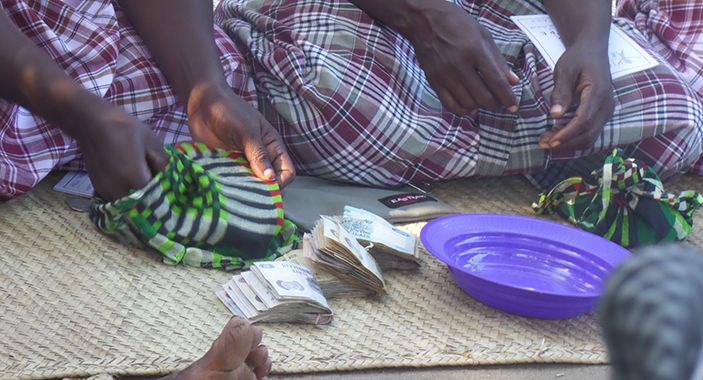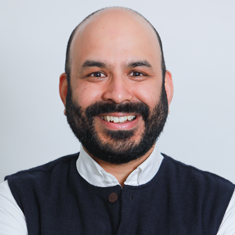Most Filipino households and small businesses operate in a cash economy. Because many lack access to banks or formal financial services, they face a major barrier to economic advancement.
The challenge of extending access to services such as deposits, loans, and payments is amplified by the geography of the Philippines. Building bank networks and ATMs over 7,101 islands is no small task, and while there has been some expansion of banking infrastructure in recent years, there is still only one bank and two ATMs for every 10,000 Filipino adults, according to a 2011 study by the Bangko Sentral ng Pilipinas.
This state of affairs presents stark disadvantages to many Filipinos and small businesses. Among them: It costs more and is riskier to send and receive money; time is required away from jobs and family to conduct basic banking; people and small businesses with an eye to the future face difficulty in planning and building credit; and needless transportation costs are incurred to access these and other services.
Although Filipinos have minimal access to banks and ATMs, they have plenty of access to another channel: mobile phones. In a country of 96.7 million people, there are 103.8 million mobile connections. According to a 2010 World Bank survey, more than 80 percent of all Filipino households have at least one mobile phone. Extending access to financial services via mobile phones has great potential for shifting the Philippines to a “cash-lite” society and providing the unbanked with the means to build assets, withstand shocks, and participate more broadly in the formal economy.
In April 2012, the U.S. Agency for International Development (USAID) launched the Scaling Innovations in Mobile Money (SIMM) Project, implemented by DAI and in partnership with the Philippines government and its development goals. SIMM uses a broad market-development approach, prioritizing government payments and payroll as a way to increase adoption of electronic payments and connect more Filipinos to financial institutions via their mobile phones.
In August, SIMM achieved a significant milestone when the Pulilan Local Government launched a mobile money payroll system, the first of its kind for a government office in the country. Now, the local government conveniently and safely provides salaries digitally to its 300 employees; employees also benefit from having a savings account and being able to pay bills or transfer money digitally as well as buy goods, insurance, and mobile phone airtime.
In addition, more than 10,000 Pulilan households can now pay their utility bills via their mobile phone.
A two-year project, SIMM’s goals are to contribute to:
- The growth of mobile money to more than 1.3 million active users, of which on-quarter are new subscribers to mobile money services.
- More than 10,000 people opening savings accounts via mobile banking.
- Increased electronic payroll implementation and adoption by 100 small, medium-sized, and large businesses, and two government of the Philippines agencies or local government units.
- An increase in the value of mobile money transactions by more than 200 percent.
“The shift to mobile money payments for payroll … will encourage greater transparency, accountability, and efficiency in governance and enhance public service delivery to citizens,” said USAID Deputy Mission Director Reed Aeschliman.
Launched in partnership with the country’s first mobile-based savings bank, BPI Globe BanKO, the Pulilan initiative affirms the values of the Philippines government of “transparency over opacity, accountability over impunity, efficiency over redundancy, agility over red tape, and citizens’ cooperation over exclusivity,” as expressed by Department of Budget and Management Undersecretary Richard Moya.
The Pulilan pilot alleviates significant safety issues inherent in the previous cash-based system. Pulilan’s municipal treasurer, Leonora del Rosari, recounted the murder of a municipal treasurer in nearby San Jose del Monte after the treasurer withdrew more than PHP1 million (approximately US$23,000) worth of salaries for government employees.
Pulilan Mayor Vicente Esguerra Sr. described the milestone as an important step in “making government payroll disbursement more efficient and safer, and expanding financial services that are convenient to our local residents."
With the proliferation of mobile technology and connectivity, new platforms emerged for electronic payments, giving rise to new service-delivery models that can connect disparate markets and communities. The emergence of a broader “financial inclusion” agenda, coupled with a greater push toward “client-centric” product design, has the potential to change the role that financial services play in all aspects of social and economic life in the Philippines.
But only if the networks for doing so can be built.
While the concept of mobile money might seem simple to sell in certain countries, its implementation is more complicated. SIMM advances mobile money and financial inclusion by pursuing two connected goals: boosting expansion and rapid adoption of mobile money services, and creating an enabling environment for mobile money. To do so, SIMM targets barriers and opportunities in:
- The payment system: network infrastructure that facilitates the exchange of money and value.
- Government services: payroll disbursement, distribution of social welfare stipends, and payment for government services including utilities, real property taxes, business permits, and other local government fees.
- Electronic payroll: wages from employer to employee.
- Agent distribution: a wide, structured network of third parties working on behalf of a mobile operator or bank.
Mobile money offers a cost-effective means to create high-impact development that benefits marginalized populations and places. In the Philippines, these places are not hard to find, as 609 of the country’s 1,634 municipalities are completely unbanked.
Leveraging the proliferation of mobile phone coverage, SIMM will continue working with national and local government agencies and the private sector to strengthen the components of mobile money ecosystems and accelerate the broader adoption of mobile money as a development tool to promote financial inclusion and good governance.





